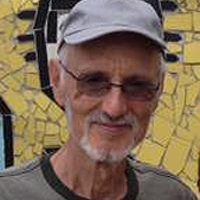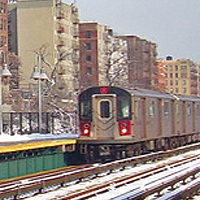
On Dec. 19, 2015, the labor leader who was president of TWU Local 100 at the time of the 2005 New York City transit strike, Roger Toussaint, keynoted a commemorative event at Medgar Evers College in Brooklyn NY. The event was not only to commemorate the strike but also to counterbalance the distortions of the right-wing and those who enable the right’s distorted narrative.
The courageous TWU Local 100 Strike of 2005 was difficult. It was a time when NY City former Mayor Michael Bloomberg, carrying out the policies of the right, was ridding rough shod over public sector unions. During Bloomberg’s tenure many public sector unions went for years without contract settlements, for example United Federation of Teachers (UFT). Some he did negotiate settlements with — Civil Service Employees Association (CSEA) and the Public Employees Federation (PEF) — but those contracts included three years with no wage increases. DC37 got 1 percent or 2 percent yearly increases but this came with give backs, including two tier starting salaries and cuts in sick, holiday and vacation time for newly hired workers.
This was the atmosphere that existed in 2005 when TWU Local 100 membership voted to strike, in defiance of the anti-strike provisions of New York’s infamous Taylor Law, which bars public employee strikes and calls for binding arbitration if both sides reach an impasse (arbitrators are generally biased toward the employers).
The event was moderated by former NYCT rail car mechanic Anita Clinton who also spoke about her experiences around the strike. Other current and former transit workers who spoke included a former member of the union’s executive board, Dennis Boyd and former track worker John McCarthy.
Of note were the remarks by a former VP of the union’s Stations Department, John Mooney who said that an event like this should be held at the union’s headquarters. Boyd recalled the circumstance under which the strike vote was taken: well after midnight on that fateful day he was the one who called the question on the issue of the strike. He said because of the great risk to the union under the Taylor Law, Toussaint tried to get the board to review the question and its consequences. However, the great majority of the assembled executive board wanted to vote on the strike there and then. Contrary to what has been said in the press and by other opponents, it was the executive board that set the strike in motion.
Other speakers included Rachel La Forest the Executive Director of Right to the City Alliance; Carmen Dixon of Black Lives Matter; Dr. Robert Paaswell an expert in urban mass transit and current professor of civil engineering at CCNY; and Immanuel Ness a professor of political science at Brooklyn College.
After the punishments imposed on the union for striking in violation of the Taylor law was the revocation of dues check off – the automatic deduction of union dues from members’ paychecks by the employer. In her remarks La Forest said that this revocation was a tactic of the MTA and of billionaire former Mayor Mike Bloomberg to destroy the union. She said, however, that, “It was a golden and incredible opportunity to go back to union organizing at its best. We went out to the shops, barns and depots every single day talking about how we could not allow this city that mayor to crush this union.”
Discussing the Taylor law was a panel of attorneys: Jeanne Mirer, Dean Hubbard and James Pope. Ms. Mirer had prepared and Dean Hubbard had presented an ILO, (International Labor Organization), complaint alleging the anti-strike provisions of the Taylor law represented a violation of the human rights of transit workers. Eventually the ILO ruled in favor of this complaint and although this decision is not binding on New York, the lawyers pointed out that it provide an excellent opportunity to force the State to remove the law’s ant-strike provisions.
In his key note address, Roger Toussaint spoke at length about the strike pointing out the inconsistencies of the media, the mayor, and opponents to his administration. He went over the gains made from the strike, primarily pushing back the MTA’s two tier pension and benefit demands, and the extension of medical coverage to retirees who moved out of the New York Metropolitan area. (This was fixed under the contract after the strike.) Of particular importance was fighting for and winning raises for 500 traffic checkers whose ranks include many women of color. Traffic Checkers had been a virtual slave labor force excluded from the regular pensions, had no health benefits and no guarantee of regular or even any hours of work.
One thing that should never be forgotten: the biggest victory of the 2005 strike is it showed that when working people are organized they can stand up to the forces that are trying to destroy their organization. As Roger Toussaint said, “If we take any blows, we are taking them together.” Other organizations of working people will use the example of the 2005 NYC Transit strike as an inspiring precedent.
Photo: Event poster, courtesy Medgar Evers College











